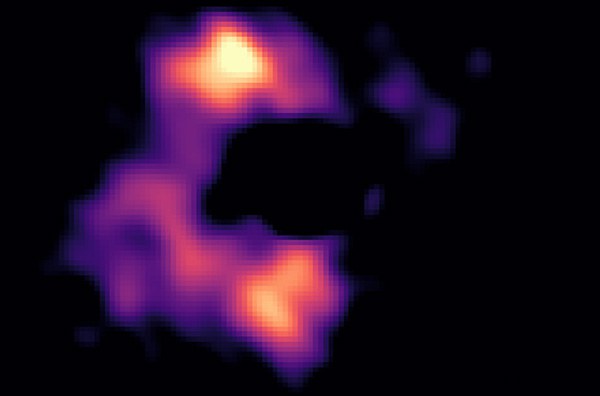Atmospheric Blobs around IRC+10216 Unveiled with a Resolution of One Stellar Radius
|
Anisotropies in dust and molecular gas have been revealed in the atmosphere of IRC+10216. (image credit: ICMM) |
AGB stars eject material during their thermal pulsation phase, forming dusty envelopes. Previous studies have found evidence of non-uniform molecular gas and dust clouds in the vicinity of AGB stars, but the distribution of molecular gas in the stellar atmosphere and the dust-forming zone of AGB carbon stars is still poorly understood due to lack of sufficient spatial resolution. In the recent ALMA study, Dr. Velilla-Prieto's team revealed complex anisotropic structures of recently formed dust and molecular gas in the atmosphere of a typical carbon-rich AGB star, IRC+10216, through the ALMA observations with a spatial resolution comparable to the stellar radius. Their results show different spatial distributions of HCN, SiS and SiC2, suggesting the presence of large convective cells interacting with the pulsation-driven winds, which cause temperature and density anisotropies. The observed anisotropies provide new insights into the dynamics of the system in the sense that it can expand with the stellar winds and contribute to the formation of the global spatial structure of IRC+10216. |

